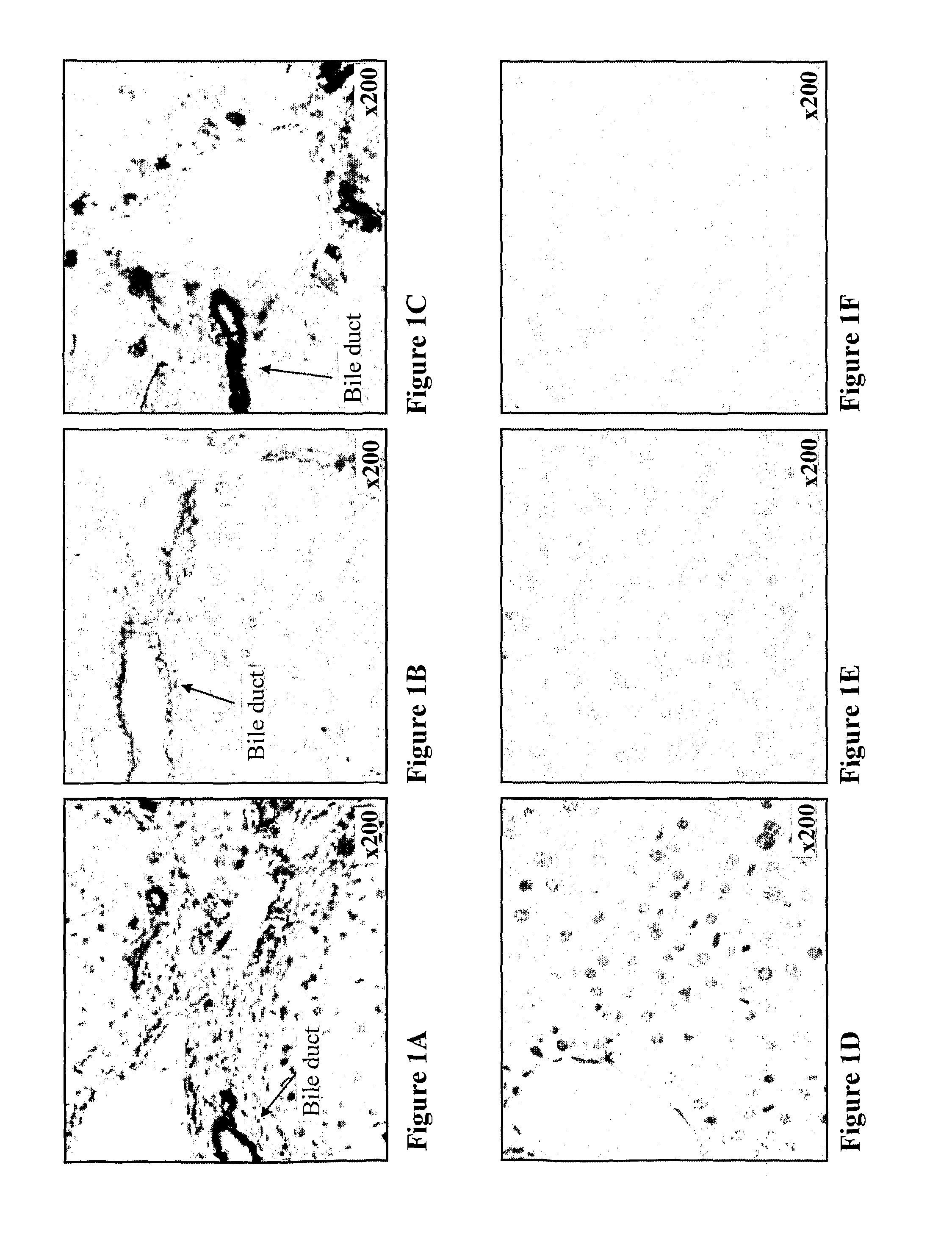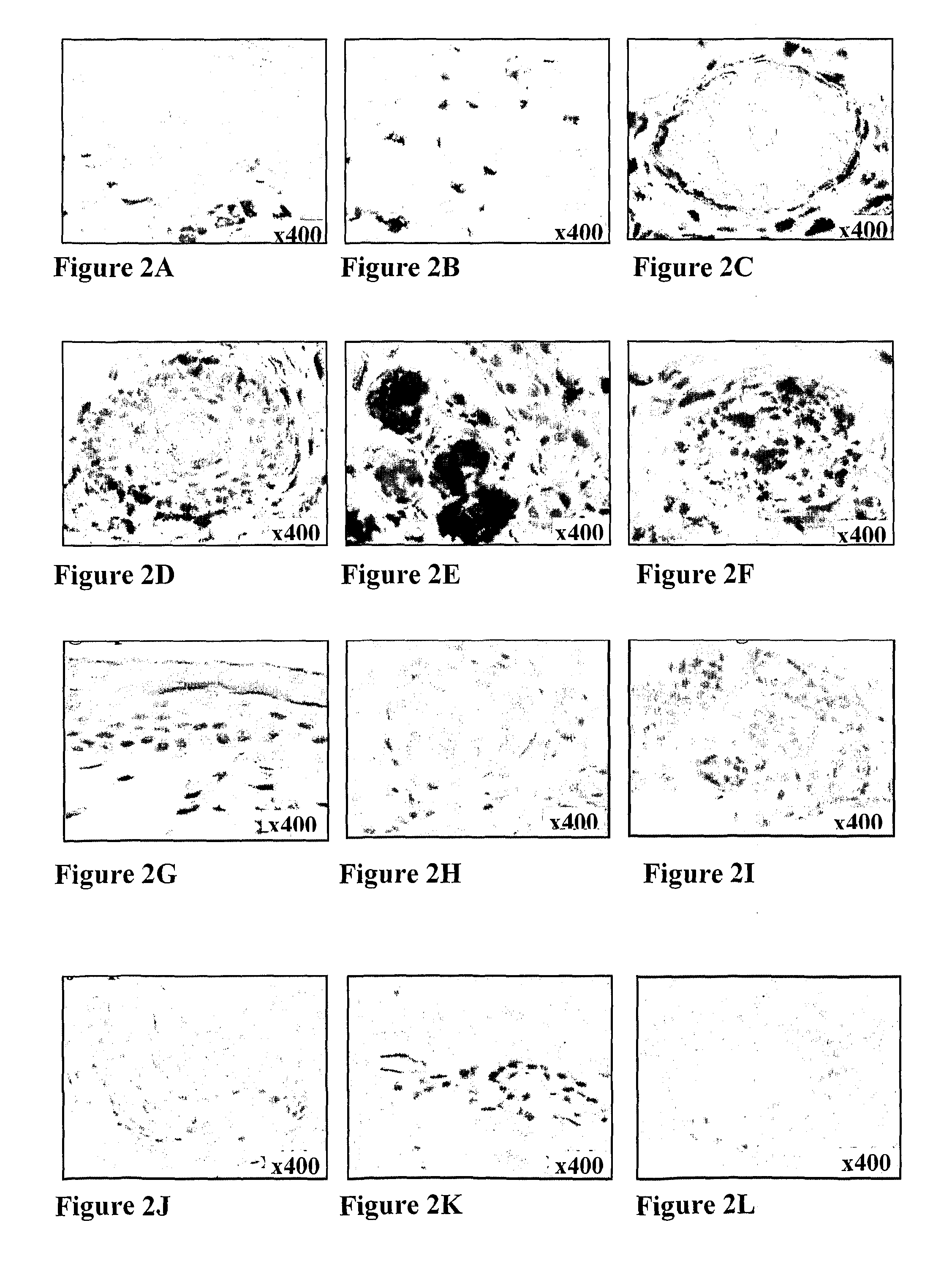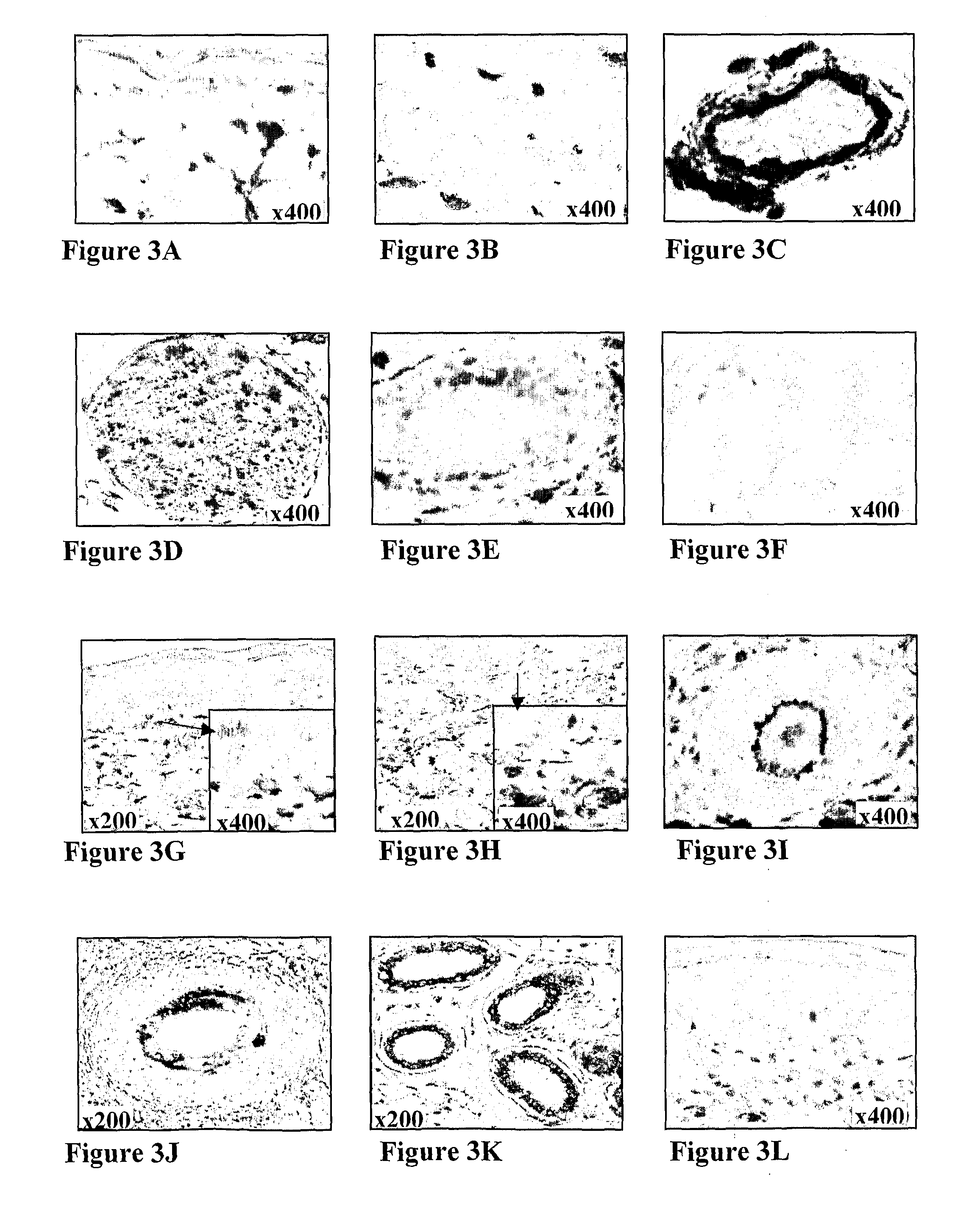CXCR4 antagonists for wound healing and re-epithelialization
a technology of cxcr4 and antagonists, applied in the field of cxcr4 antagonists, can solve the problems of affecting the many vital functions of the body, affecting the healing effect of wounds, and not much is known about the factors, and achieve the effect of preventing or reducing scarring of the skin
- Summary
- Abstract
- Description
- Claims
- Application Information
AI Technical Summary
Benefits of technology
Problems solved by technology
Method used
Image
Examples
example 1
CXCL12 is Similarly Expressed in Human, Swine, and Rat Normal Skin
[0276]The expression of CXCL12 in normal skin was examined by immunohistochemical staining using anti-CXCL12 mAb (mAb350). The inventors first examined the antibody cross reactivity of CXCL12 staining on liver sections of mouse, human, and rat since previous studies have shown that CXCL12 is specifically expressed in the bile ducts and blood vessels of human liver (Wald et al., 2004). Mouse, human, and rat liver bile ducts were specifically stained with monoclonal antibody mAb350 for CXCL12 (FIGS. 1A, 1B and 1C, respectively). A negative control stain performed without the primary Ab showed no staining (FIG. 1D-1F). Using the same monoclonal antibody staining for CXCL12 in human, swine and rat normal skin showed similar expression patterns. CXCL12 in human normal skin (FIG. 2) was detected in the basal layer of the epidermis (FIG. 2A), on scattered cells in the papillary dermis (FIG. 2B), in pericytes and in the endot...
example 2
Following Burns, the Level of CXCL12 was Markedly Increased in Human Burn Blister Fluids, Hair Follicles, Blood Vessels Endothelium and Fibroblasts in the Recovering Dermis of Rat, Swine and Human Skin
[0277]In order to study the effect of burn injury on CXCL12 expression in the skin, the inventors first collected burn wound fluids and CXCL12 levels were measured by ELISA assay and compared to the levels of IL-8 (FIG. 4A, 4B). The results indicate a unique pattern of the chemokine CXCL12 expression compared to IL-8. IL-8 appeared first in the burn fluid a few hours after injury, reached a plateau level after 1 day and remained at the same level for the next 4 days. CXCL12, however, appeared a few hours after injury, reached a plateau level after 1 day, and remained at the same level for an additional 2 days; then the level of CXCL12 decreased exponentially. The consistent overexpression of IL-8 in burn wound fluids and skin tissue has been also reported by others (Iocono et al., 2000...
example 3
Inhibition of the CXCL12 / CXCR4 Pathway Resulted in Reduced Eosinophil Accumulation and Improved Epithelialization
[0282]In order to evaluate the effect of the CXCR4 antagonist 4F-benzoyl-TN14003 and neutralizing antibodies to the receptor on the recovery of rat skin, the inventors first tested their ability to inhibit the migration of rat lymphocytes in response to CXCL12. Migration assay was carried out on total rat lymphocytes separated by Ficoll gradient and their migrating ability to medium containing CXCL12 was examined. Lymphocytes were incubated with the CXCR4 antagonist 4F-benzoyl-TN14003, or an antibody against CXCR4 (10 μg / ml). Treatment of cells with 4F-benzoyl-TN14003 exerted a strong inhibitory effect, whereas treatment of cells with neutralizing antibodies to CXCR4 exerted moderate effect on the migration of cells in response to CXCL12 (FIG. 8).
[0283]Next, the inhibitory effect of CXCR4 antagonists on burn wound healing was examined (FIG. 9). Inhibitors were injected su...
PUM
| Property | Measurement | Unit |
|---|---|---|
| time | aaaaa | aaaaa |
| time | aaaaa | aaaaa |
| temperature | aaaaa | aaaaa |
Abstract
Description
Claims
Application Information
 Login to View More
Login to View More - R&D
- Intellectual Property
- Life Sciences
- Materials
- Tech Scout
- Unparalleled Data Quality
- Higher Quality Content
- 60% Fewer Hallucinations
Browse by: Latest US Patents, China's latest patents, Technical Efficacy Thesaurus, Application Domain, Technology Topic, Popular Technical Reports.
© 2025 PatSnap. All rights reserved.Legal|Privacy policy|Modern Slavery Act Transparency Statement|Sitemap|About US| Contact US: help@patsnap.com



